Russian aircraft carrier - the dream becomes true?
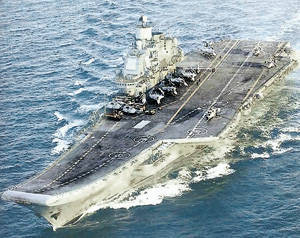 The question of the prospects for the creation of full-fledged aircraft carrier forces remains one of the most important in terms of the discussion of the main directions of the naval construction of the Russian Navy in the medium and long term. Future Russian aircraft carriers are not just a fad or a topic for an interesting and heated discussion. Aircraft carrier is a vital attribute, without which the Russian Navy by and large will never truly return to the oceans.
The question of the prospects for the creation of full-fledged aircraft carrier forces remains one of the most important in terms of the discussion of the main directions of the naval construction of the Russian Navy in the medium and long term. Future Russian aircraft carriers are not just a fad or a topic for an interesting and heated discussion. Aircraft carrier is a vital attribute, without which the Russian Navy by and large will never truly return to the oceans."BASES" DEMAND
It is noteworthy that this year exactly 10 years have passed since the day the RF President approved the peculiar, as it is fashionable to say today, “road map” in the field of naval construction of our state - “Fundamentals of the Russian Federation policy in the field of military -sea activities for the period until 2010. " It was in this document that, for the first time, it was actually openly, clearly and clearly proclaimed the need for the presence of “aircraft carrier” class ships in the combat structure of the Russian Navy. So, in the section “Measures for the implementation of priority directions of the policy of the Russian Federation in the field of naval activities”, the question of “maintaining combat readiness and improving naval equipment and weapons, including ... the construction of ... surface ships, t. hours aircraft carriers with enhanced combat capabilities equipped with ... effective aviation complexes for various purposes. "
However, the lack of funds even for the construction of much “smaller” corvettes, frigates and non-nuclear submarines for a long time did not allow either the command of the Russian Navy or the Russian defense industry to take due care to address the issue of design and construction of aircraft carriers, as well as the organization of aircraft carrier formations and development tactics of their application in general. On the other hand, the understanding that we need aircraft carriers - if not already openly, then on the sidelines - was expressed by the majority of the top command staff of the Russian Navy. They even discussed the possibility of launching a separate federal target program, which provided for comprehensive work on the creation of a national navy carrier formations, however - in reality, it never appeared.
The situation has changed relatively recently - when, rising to the wave of multi-billion dollar export earnings, the Russian government began to pour into the Armed Forces and the domestic defense industry complex very significant amounts. In the end, in May 2007 of the year on the basis of the St. Petersburg 1 Central Research Institute of the Ministry of Defense of the Russian Federation under the direct supervision of the then Commander-in-Chief of the Russian Navy admiral of the fleet Vladimir Masorin, a meeting of the heads of the institutions of the scientific complex of the Russian Navy was held. . At the meeting, in particular, it was stressed that the presence of an aircraft carrier as part of the domestic fleet was “a necessity fully justified from a theoretical, scientific and practical point of view”.
A month later, Vladimir Masorin said that, based on a deep, comprehensive and careful study of the promising areas of naval construction, a definite conclusion was made about the need to introduce new types of aircraft carriers in the Russian Navy — up to six ships over the next 20 – 30 years .
“Now we are developing a future aircraft carrier with the active participation of science and industry. However, it is already clear that this will be an atomic aircraft carrier with a displacement of the order of 50 thousand tons, the fleet admiral Masorin said. “We assume that it will be based on the order of 30 aircraft - airplanes and helicopters. We will not build the communities that build the US Navy based on airplanes and helicopters up to 100 – 130. ”
Soon, however, Vladimir Masorin was dismissed - “by age”, his place was taken by Admiral Vladimir Vysotsky, and talk about aircraft carriers for some time turned out to be in the shadow of the “grandiose” program of purchasing four Mistral-type landing-landing ships a couple of billion euros.
The aircraft carrier theme again "returned to the viewer" in February 2010, when, within the framework of the conference devoted to the 100 anniversary of the Admiral of the Fleet of the Soviet Union Sergey Gorshkov, questions were raised about the prospects for the development of the Russian Navy aircraft carrier forces. After the conference, the Commander-in-Chief of the Navy, Admiral Vladimir Vysotsky, reported that, according to the developed and approved plan, by the end of 2010, the Nevskoye PKB, the developer of all Soviet aircraft carriers, should present the technical design of the future aircraft carrier with the main tactical and technical elements.
Encouraging statements that, however, hide a whole range of issues and problems that are still unresolved, on which the success of “the whole operation” will depend, some of the most important of which are:
- the choice of the scheme of the aircraft carrier;
- determining the composition of the ship's air group;
- the creation of an appropriate system for the basing of new ships and the organization of the process of training pilots of deck-based aviation.
RETURN TO TRACK?
Three classical schemes of aircraft carrier class ships are widespread in the world today:
- CTOL (Conventional Take-Off and Landing), or, as they have recently been more commonly referred to by foreign naval theorists, CATOBAR (Catapult Assisted Off);
- STOBAR (Short Take-Off But Arrested Landing);
- STOVL (Short Take-Off and Vertical Landing).
In the first case, the take-off of the aircraft is provided with a catapult, and the landing is performed on the aero-finisher. The main operators of such aircraft carriers are the US and French Navy, which is equipped with four (US) or two (France) C-13 type steam catapults capable of being 2,5 seconds long. Accelerate the aircraft with a take-off weight of up to 35 tons up to speeds of almost 300 km / h. This type includes the Brazilian "Sao Paulo", the former French "Foch".
In the second case, STOBAR, the take-off of the aircraft is carried out with a shortened run-up using the bow springboard (or vertically), whereas the landing is also performed on the aero-finisher. Vivid representatives of this type of aircraft carriers are the Russian TAVKR “Admiral of the Fleet of the Soviet Union Kuznetsov”, the aircraft carrier Vikramaditya modernized in Russia for the Indian Navy, and the aircraft carrier Shi Lan (former Soviet TAVKR “Varyag”) that is being prepared for entry into the combat crew of the PLA Navy. .
The third type of aircraft carrier, STOVL, is generally similar to the type of STOBAR, but landing in this case is performed vertically, and not on aero-finisher. Such ships include the British Invincible, the Spanish Prince of Asturias, the Italian Cavour and Garibaldi, the Thai Chakri Narubet, etc. The project of the British aircraft carrier Queen Elizabeth, which is theoretically an aircraft carrier of the STOVL type, is also interesting. the project provides for the installation of a catapult and aerofinishing device on it, which actually turns it into a “real” aircraft carrier, such as CATOBAR.
WHAT SAME AIRCRAFT NEEDS RUSSIAN NAVY?
It seems that our fleet, or rather, the country, in the foreseeable future is unlikely to need the classic CATOBAR-aircraft carrier of the dimensions of the American atomic giants. Of course, the “real” aircraft carrier is not only the high combat potential of the fleet, but also the prestige of the country, but — honestly, we should admit this to ourselves — we will not pull out the design, construction and normal operation of such a ship even in the long run. No, we can try, spend huge amounts of money on it - but in this case, no matter how much we had to “tighten the belt” too much. At the same time, of course, the Neva PKB can “get from the archive” the design documents on the atomic Ulyanovsk, which had the classical CATOBAR scheme, but whether our, as experts say, our shipyard’s “severely degraded technologically” build it? And, most importantly, how much will it cost the budget?
On the other hand, the Russian Navy, of course, needs not a specialized anti-submarine or the like, but a multi-purpose aircraft carrier on which a naval wing will be based (aircraft group) that will be able to effectively solve such tasks as:
- Destruction of connections of surface ships, convoys and airborne detachments of the enemy;
- search and destruction of submarines of various classes;
- destruction of enemy coastal objects on the coast and in the depth of the territory;
- winning and maintaining air superiority in the area of hostilities;
- provision of air support in the process of deploying their ship groupings and submarines, as well as actions of amphibious assault forces and ground forces groups on coastal directions;
- blockade of separate sea areas and torrential zones.
For the Russian Navy, there is one more specific task of carrier groups — multifunctional (and not only aviation) cover of the deployment and / or combat patrol areas of their strategic submarine missile carriers, which are located in close proximity to their coast (the seas of the Arctic Ocean and the Pacific Ocean). ), which is impossible without carrier groups. In particular, Admiral Masorin, the former Commander-in-Chief of the Navy, and Admiral Vysotsky, the current Commander-in-Chief of the Navy, emphasized this, stressing that on the present Navy Day, “if we don’t have an aircraft carrier in the north, then the combat stability of the missile submarines of the Northern Fleet in those areas will be reduced to zero already on the second day, because the main enemy of the boats is aviation. ”
To all of the above, the aircraft carrier fully corresponds, for which the pilots of the aircraft will use the nasal springboard, which looks more attractive and, in particular, because, first, our fleet already has many years of experience in operating this type of ship (the Kuznetsov) and the organization of the process of combat training of pilots-deckers when using such a scheme of take-off; secondly, there is a positive experience in designing aircraft carriers of this type; thirdly, shipbuilders of Sevmash have accumulated experience in creating, though not from scratch, an aircraft carrier of the STOBAR type (“Vikramaditya”), and, finally, fourth, developing and producing an ejection device, and then “introducing” it the ship will lead to the inevitable delays in the entire program, and after that there will also be inevitable difficulties with the training and retraining of pilots.
It is interesting that in 2007, during the International Naval Salon, at the joint stand of the Severodvinsk PO “Sevmash” and the Nevsky Design Bureau, a huge poster was shown with a picture, allegedly, of “one of the options” of a promising Russian aircraft carrier, which was indirectly confirmed by adjacent words : “Perspective design and construction of an aircraft carrier”. Although, of course, a drawing is only a drawing, it is quite possible is simply the result of the artist’s imagination (after all, for example, American advertisements on Russian arms exhibitions Tanks and aircraft), or deliberate "misinformation of a potential enemy." Nevertheless, judging by the figure, the future Russian "master of the oceans" is an aircraft carrier of the STOBAR type, without shock weapons, with a fairly compact superstructure-island - without chimneys, which suggests the presence of a nuclear power plant on the ship. On the other hand, at the end of July this year Admiral Vladimir Vysotsky said that the Nevsky Design Bureau "won the work on the project, but failed. Therefore, several organizations are doing the project today, including the Nevsky Design Bureau, the Northern Design Bureau. ”
The coming months will show what will come of it, although the approach of the Russian Navy command to the question of determining the appearance of a promising aircraft carrier and its design is alarming. So, Admiral Vysotsky said: “Displacement has not yet been determined. I told the designers that it was necessary to build a ship for specific tasks. If they can put him in a matchbox, then please. If it turns out the same as the Americans with a displacement of more than 100 thousand tons, then justify. I generally try to get away from the characteristics. ” At the same time, however, the Commander-in-Chief expects the appearance by the end of this year. TECHNICAL project of the ship.
However, until now, technical design was carried out in the design bureau on the basis of a technical (or tactical-technical) task, which clearly stated: the purpose of the combat ship, a set of weapons and equipment, the type of power plant, displacement, speed, cruising range, autonomy, etc. As command A fleet can expect a technical project from the designers without giving them any of the above, limiting themselves only to general phrases ?! Yes, with such a "fake you to get what cannot be" neither Nevskoye, nor Northern, nor Zelenodolsk PKB will cope - nobody will cope. As a result, the conclusion is self-evident: the command of the Navy reasonably “will be dissatisfied and will reject” the work of the PKB and, referring to their incompetence, will decide to “buy weapons abroad.”
Is it possible that this is not a technical project, but a technical proposal that developers are preparing even before preliminary design? But then this is the way to speak, although in this case there can be no talk of the fact that the leading aircraft carrier, as Vladimir Vysotsky said, can be ready for 2020.
In general, there are more questions here than answers ...
AIR GROUP
Another crucial question is the choice of the composition of the air group of future Russian aircraft carriers. Based on the tasks discussed above, which may be assigned to them, the following types of aircraft will be necessary as part of the ship's air group:
- multifunctional fighters that can not only ensure the achievement of superiority in the air, but also successfully combat enemy surface ships, as well as deliver powerful missile and bomb strikes on its coastal targets;
- airplanes or helicopters of the radar patrol, allowing to “move” the boundaries of the radar field from the core of the aircraft carrier group and capable of providing target designation data to the missile complexes weaponswhich armed ships of the aircraft carrier;
- PLO planes or helicopters;
- multi-purpose (transport and search and rescue) helicopters;
- REP aircraft or helicopters (these functions can be assigned to other aircraft groups of the aircraft);
- combat training aircraft, serving for training pilots of naval aviation and capable of being used as light fighters and attack aircraft.
Of the aircraft available in Russia today that are suitable for ship-based, the following registration can be obtained on the deck of promising domestic aircraft carriers:
- Su-33 fighters, which, however, need radical modernization to ensure the versatility of their combat use - for example, they are not able to use high-precision air-to-surface weapons today; besides, their mass production was discontinued (the equipment was even dismantled at KnAAPO), and the service life on the resource is not unlimited, and / or MiG-29K / KUB fighters are the most modern and versatile ship-based aircraft today;
- various ship-based helicopters - Ka-31 radar patrol, Ka-29 transport and combat, Ka-27PS search and rescue and Ka-27 anti-submarine Ka-52 (they also would not be prevented by upgrading - at least in terms of equipment with more modern avionics); Ka-XNUMX attack helicopters can be deployed on an aircraft carrier - they will be indispensable in providing air support for amphibious assault operations.
At the same time, the MiG-29K / KUB is definitely the favorite for a propiska on board a promising aircraft carrier, the bulk of the development work on which has so far been successfully completed - at the expense of the Indian customer. Among the important advantages of the MiG-29K / KUB are increased reliability of units, systems and components, reduced 2,5 times compared with previous versions of the MiG-29, the cost of flight hours, increased flight resources more than 2 times, greater fuel capacity and the presence of a refueling system fuel in the air, improved performance on takeoff and landing modes - due to the modification of the airframe, the use of modern digital control systems and new more powerful engines, an increased combat load of a very wide range, and t kzhe availability of modern avionics complex having a large modernization potential.
In addition, the prevalence of MiG-29 family aircraft in the domestic Air Force should be taken into account, which, thanks to a fairly high unification, will provide significant advantages in terms of operating and training flight and technical personnel.
It should be particularly noted that representatives of the Russian Navy command spoke about the preference of the MiG-29K / KUB as the main fighter of the ship's air group of a promising aircraft carrier three years ago. More recently, the media leaked information that the Defense Ministry plans to purchase a batch of 2011 MiG-26K fighters for the Navy by the end of 29, but, as noted by some experts, the whole issue “rested” on the contract value.
However, the normal operation of the aircraft carrier group still cannot be organized without the presence of the DRLOI aircraft as part of the ship's air group — namely, an aircraft, and not a “temporary surrogate” in the form of the Ka-31 helicopter, which is able to “close” the near zone, but unable to become “eyes and ears "commander of the aircraft carrier group at a great distance from the warrant. Also needed and specialized aircraft REP (EW). At one time, on the basis of the Su-27KUB, it was planned to create a number of specialized ship-borne aircraft, including the RLDN, REP, etc., however, this program does not exist today. Just as there is actually no project for the AWACS aircraft Yak-44, work on which was stopped at the beginning of 1990-s, and one of the models of which can be seen in the famous private museum of technology in the Moscow region. So for now, you may have to rely only on the Ka-31 radar helicopter complex.
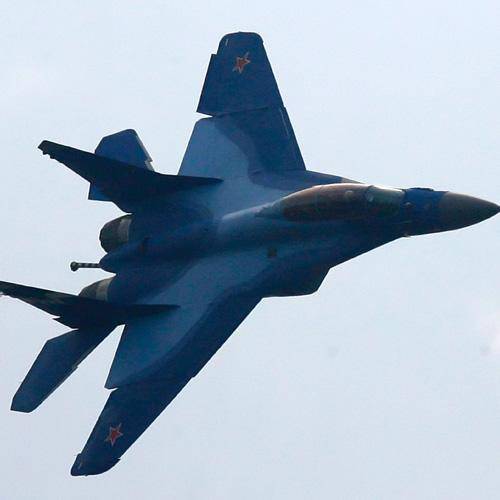
YEI THREAD
Another key issue of the “aircraft carrier theme” is associated with the creation of an appropriate system for the base of aircraft carrier forces and the organization of an effective system of training pilots-deckers. We don’t need to say a lot about the need to create an aircraft carrier-based system before the first aircraft carrier of the new type is installed - just remember that it was due to its complete absence that "Kiev" constantly stood in the roadstead of Severomorsk, "dying out" the resource of mechanisms and equipment its GEM. In addition, it is necessary to foresee and mooring lines for the ships of the combat guard aircraft carriers. We also need modern coastal airfields with all the necessary infrastructure to accommodate aircraft and helicopters of the air group on them during the inter-cruise period or during the ship's stay at the dock.
Finally, the most "sore" place of the national "carrier idea" for today is the training of deck aviation pilots and engineers of the aviation engineering service. Naval aviation of the Russian Navy does not have its own educational institution for the training of technical specialists - they have to be taken from the Air Force. But it’s still half the problem — we don’t have any place to teach pilots, since before the young pilot sits on the deck and takes off from it, he needs to be prepared for this not only on the notebook and on the simulator (if there is one), but also, as they say, live. The preparation of the palubnikov on the Crimean simulator NITKA (Land test training complex aviation) remaining at the disposal of the Ministry of Defense of Ukraine, as events of the last three years have shown, is not only too expensive, but not always feasible even after the prepayment has been paid and is entirely dependent on political sentiments in Kiev. As a result, the Russian Ministry of Defense made a logical decision about the need to create a similar simulator in Russia. For this purpose, the base of the former naval aviation school in Yeisk of the Krasnodar Territory was chosen, allowing to create not just a simulator for the decker, but also a multi-profile combat use center for training pilots of various types of aircraft used by naval aviation of the Russian Navy.
The cost of building a complex in Yeisk announced for today by the command of the Russian Navy is about 24 billion rubles, of which 8 billion is already practically mastered in the first phase of construction - it provides for the construction of a take-off and landing block with airfield support complex, housing for military personnel and personnel complex, as well as social infrastructure. Commissioning of the first stage is scheduled for 2011 year - by that time Proletarsky Zavod pledged to supply equipment for the aerofinishing complex. And only after the successful completion of the work on the first stage of construction, will the construction of facilities for the test block of the complex in Yeisk begin.
At the same time, the nature of the “EITA NITKI” being built can serve as additional, albeit indirect, confirmation that the promising Russian aircraft carrier will have a bow springboard and not a catapult - it’s only the aircraft carrier’s flight deck imitator that is being built, and no catapults. On the other hand, no one bothers to put a steam catapult in the framework of the second stage - is that only able to make it "Proletarsky Plant"? We have no more in Russia.
INSTEAD OF THE AFTERWORK
Once, addressing the welcome speech to the crew of the nuclear aircraft carrier Dwight Eisenhower, the then chairman of the Joint Chiefs of Staff of the US General John Shalikashvili said: “I feel calm every time when I ask the operational officer“ Where is the nearest aircraft carrier? ” he can answer: "He is in that very place!" For the interests of the United States, it means everything. ”
These words, spoken in relation to, as we said a couple of decades ago, “weapons of imperialist aggression”, do not require any additional comments. But for many years the dream of the legendary naval Commissar and Minister Nikolai Kuznetsov, and many other admirals and shipbuilding engineers, remained unfulfilled in our country. The legendary pilgrim who passed away prematurely, Hero of Russia, Major General Timur Apakidze, even once said that “the country painfully took a long time to create aircraft carriers, without which the Navy simply loses its meaning nowadays”.
And today we can firmly say: the presence of a ship of the “aircraft carrier” class as part of the Russian fleet is a completely justified necessity from a theoretical, scientific and practical point of view.
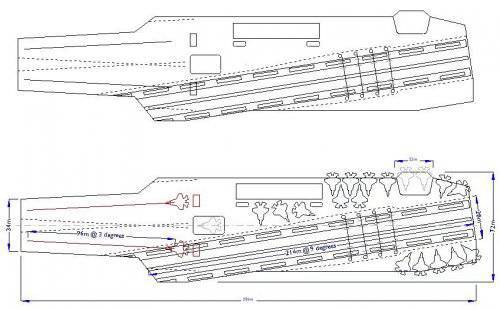
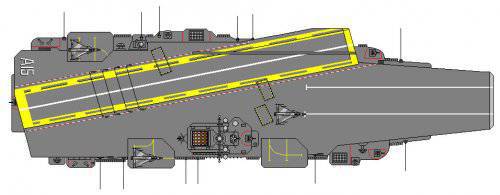
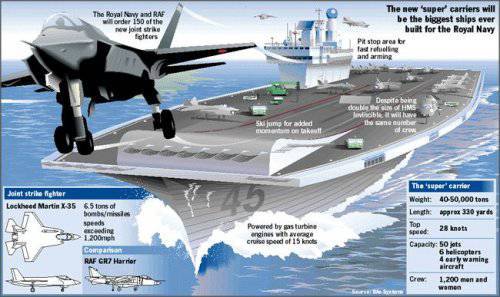
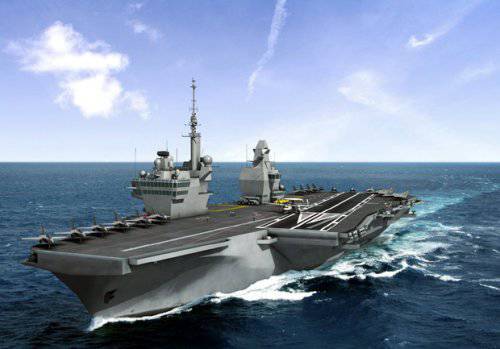
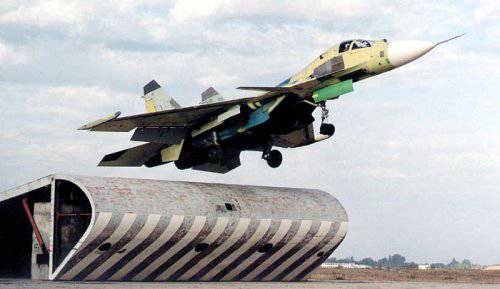
Information